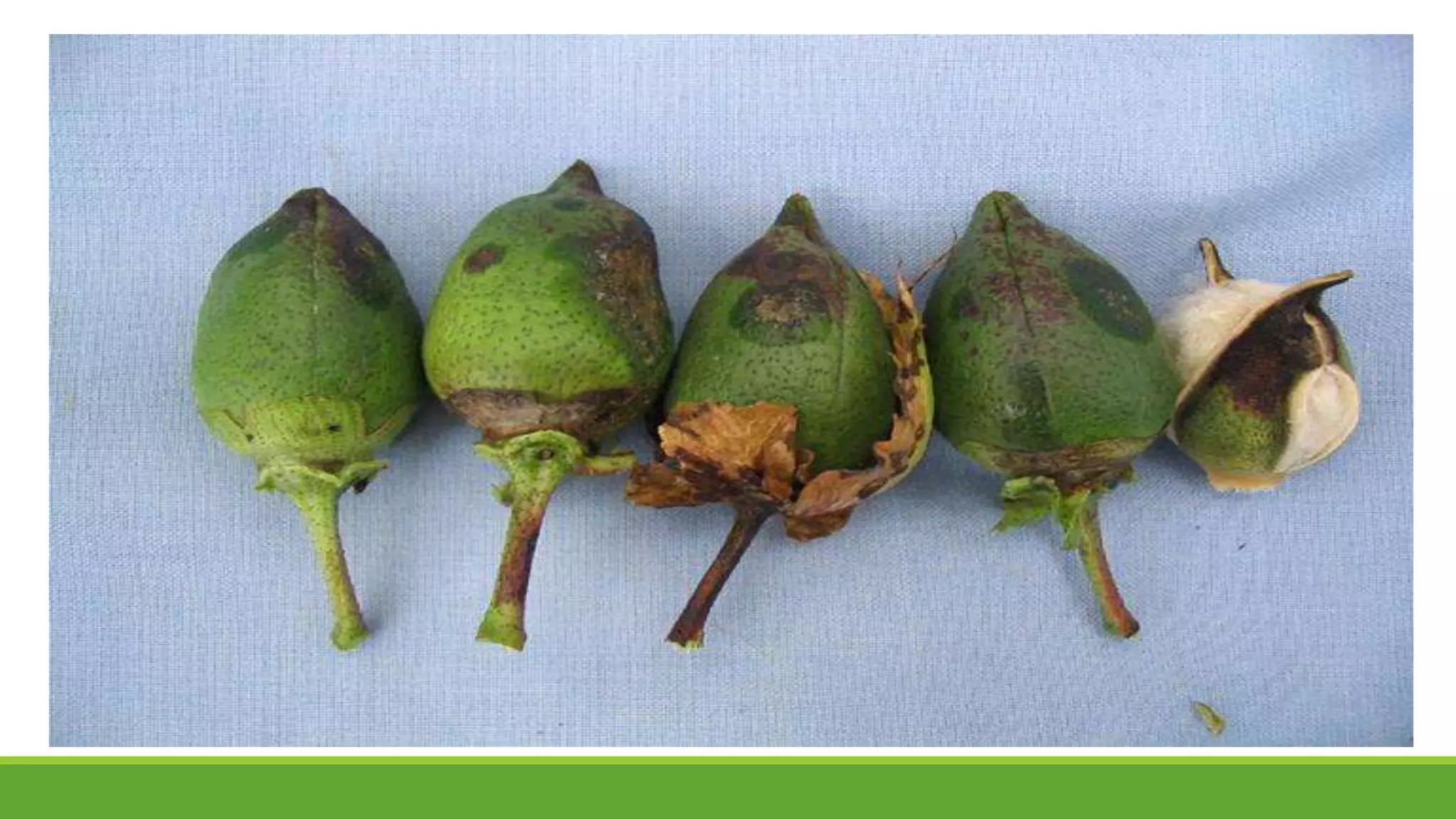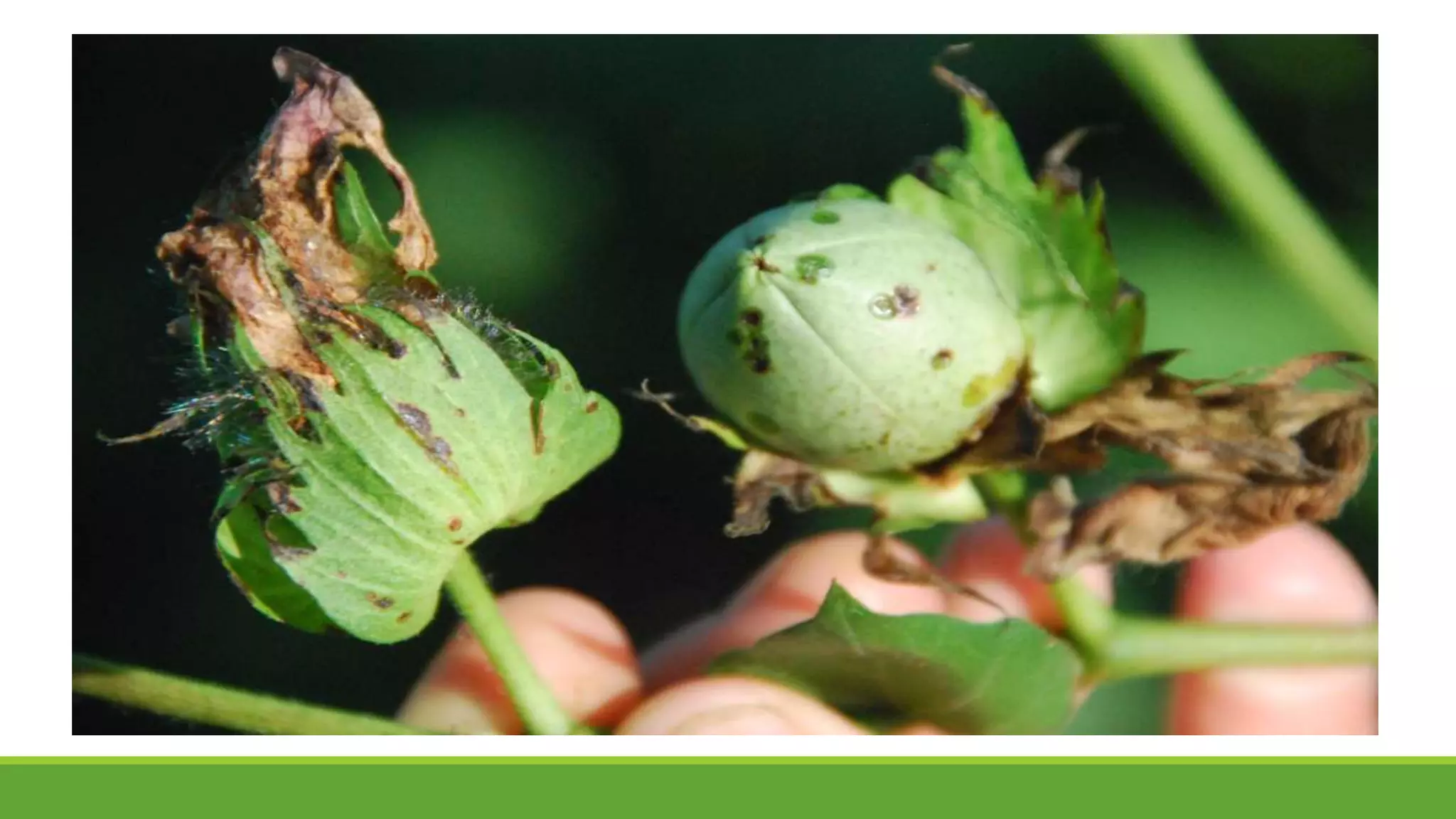Angular leaf spot of cotton, caused by the bacterium Xanthomonas axonopodis pv. malvacearum, is a significant disease affecting cotton crops worldwide, leading to yield losses of 5-27%. Symptoms include dark green, water-soaked angular spots on leaves, which can progress to black arm syndrome and internal boll rot. Management strategies focus on resistant varieties, cultural practices, and chemical controls to mitigate the disease's impact.




















